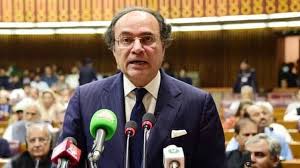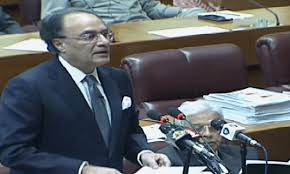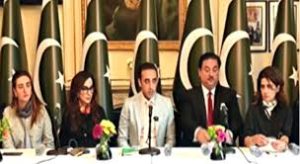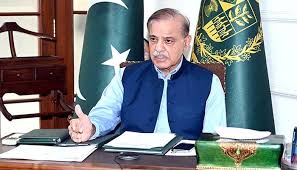Finance Minister Aurangzeb unveils Rs17.573 trillion federal budget

Abdullah Jan
Islamabad: Minister for Finance and Revenue Senator Muhammad Aurangzeb on Tuesday unveiled the Rs17.573 trillion growth-oriented federal budget for the fiscal year 2025-26.
Presenting the federal budget 2025-26 in the National Assembly, the finance minister highlighted that the budget for the upcoming fiscal year was the beginning of the strategy, especially chalked out to promote a competitive economy. “It will help increase foreign exchange reserves, reduce the fiscal payment imbalances, thus promoting the overall economic productivity,” he said.
The minister said the government has fixed the annual economic growth target at 4.2% while the inflation rate will remain 7.5% during the upcoming fiscal year.
Similarly, he said the fiscal deficit is expected to remain at 3.9% of the GDP, while the primary surplus is expected to remain 2.4% of GDP.
The Federal Board of Revenue (FBR) revenues have been targeted at Rs 14,131 billion for the upcoming fiscal year, showing an 18.7% increase as compared to the ongoing FY24. Out of the total federal revenues, provinces will get a share of Rs 8,206 billion, he added.
Aurangzeb further said that the target for the federal non-tax revenues had been set at Rs 5,147 billion. The net revenues of the federal government will be Rs 11,072 billion. Target for federal government total expenditures has been set at
Rs 17,573, out of which Rs 8,207 will be used for the markup payments.
The current federal government expenditures are Rs 16,286 billion, the finance minister said, adding that the government has proposed to allocate Rs 1000 billion for the annual Public Sector Development Programme (PSDP).

The finance minister said that in the budget FY26, the government will provide Rs 2,550 billion, and Rs 971 billion for the defence and civil services, respectively.
For pensions, he said an amount of Rs 1,055 billion has been allocated. Similarly, Rs 1,186 billion have been set aside for the subsidies for power and other sectors. Likewise, the government has set aside Rs 1,928 billion in term of grants for BISP, Azad Jammu and Kashmir, Gilgit Baltistan and newly merged districts of Khyber Pakhtunkhwa.
The finance minister underscored that the government is intended to increase the coverage the flagship initiatives of BISP under which the number of beneficiary families will be increased to 10 million. The government has increased the allocated amount for BISP by 21% to Rs 716 billion.
The finance minister said that the government had introduced several measures, due to which the macroeconomic indicators showed resilience.
He said that the government had achieved 2.4 per cent of primary surplus, the inflation rate went down to 4.7 per cent as it was recorded at 29.2 per cent during the last two years.
As compared to the current account deficit $1.7 billion in the last year, the minister said that a current account surplus of $ 1.5 billion was expected during the current financial year.
Senator Aurangzeb said that the rupee strengthened and remittances witnessed 31 per cent growth during the first 10 months of the current financial year and reached to $31.2 billion, adding that it was expected that remittances would reach to $38 billion by the end of the current financial year.
The foreign exchange reserves held by the State Bank of Pakistan were increased by $2 billion, adding that the forex reserves were expected to reach $14 billion by the end of the current fiscal year, he remarked.Drones
The minister said that the government had taken a difficult decision, which resulted in macroeconomic stabilisation, and that was also recognised by the international rating agencies and national and international surveys.
According to PCW, the investor’s confidence was improved by 49 per cent and reached to 83 per cent, he said, adding that overseas chambers of commerce and industry echoed that the business confidence index witnessed historic improvement.
According the Gallup, he said the local economy witnessed significant improvement and household financial outlook improved by 27.5 per cent during last quarter.
The IPSOS survey revealed that local consumers’ expectations grew and reached to 6-year highest level, he mentioned.
Meanwhile, the other credit rating agencies, including Fitch, improved Pakistan’s rating from CCC+ to B-, adding that the ADB, WB and IFC not only expressed confidence over Pakistan’s economy but also announced for providing huge financing.
The finance minister further added that the government had also introduced several measures to enhance revenue collection in the country.
He said that tax to GDP was stood at 10 per cent, which was sufficient to run the government expenses, adding that it was a prerequisite to enhance tax to GDP ratio to 14 per cent to attain sustainable growth.Drones
To harness the true revenue potential, under the leadership of the Prime Minister transformation plan for the Federal Board of Revenue was initiated, and digital transformation was the central point of it.





